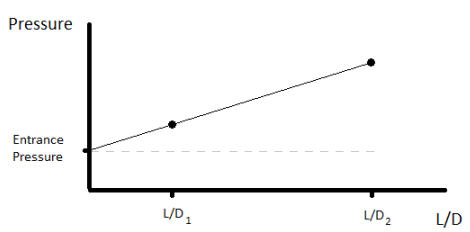Viscosity Input dialog
This dialog allows you to enter raw viscosity data in a number of different forms to suit various measurement methods.
Input Format
This controls the way that the viscosity data is entered into the dialog. Changing this selection will either update the columns displayed in the Viscosity data table or hide this selection if Cross-WLF parameters are to be entered manually.
Basic Input Format
This will set the Viscosity data table to only show the Temperature, Shear Rate and Viscosity columns. Select this option if you only have these values available.
Capillary Input Format
This will set the Viscosity data table to show the Temperature, Shear Rate, Viscosity, Die Diameter, Die Length on Diameter (L/D), Exit Pressure and Entrance Pressure columns. Select this option if your data was obtained through capillary experiments and you have these values available. This option will allow:
Juncture loss coefficients to be fit provided that multiple Die L/D exist. Fitting of juncture loss coefficients will have a preference to fit Entrance Pressures if provided
Viscosity Pressure Dependence (D3) will be fit if non-zero Exit Pressures are entered
Shear heating influences to be taken into account through the use of simulation
Slit Input Format
This will set the Viscosity data table to show the Temperature, Shear Rate, Viscosity, Height, Width, Length and Exit Pressure columns. Select this option if your data was obtained through slit experiments and you have these values available. This option will allow:
Pressure dependence (D3) will be fit if non-zero Exit Pressures are entered
Shear heating influences to be taken into account through the use of simulation
Cross-WLF Model Input Format
This will not show the Viscosity data table. Instead, the fitting process will not use any raw viscosity data and allow you to enter the coefficients manually after an initial fit has been completed.
Tabulated Viscosity Data
The Viscosity data table consists of columns depending on your selection in the Input Format drop down list. You can either enter data directly in this table or use the Text Editor to paste in space or tab separated values.
Viscosity is Weissenberg Rabinowitsch Corrected Checkbox
Select this if the viscosity entered has already been corrected for non-newtonian behavior. Applicable to the Basic, Capillary and Slit input formats.
Viscosity is Bagley Corrected Checkbox
Select this if the viscosity entered has already been corrected for entrance pressures. Only applicable to the Capillary input format when the Die Diameter and L/D have been entered.
Generation of Bagley corrected viscosities will require measurements to be taken at multiple L/D ratios at the same flow rate and temperatures. This allows the entrance pressure to be calculated from the intecept of a Pressure versus L/D plot. A Bagley corrected viscosity is then calculated on the pressure drop minus the entrance pressure.
Viscosity Fitting Requirments
In order for the Cross WLF Model to be fit to raw viscosity data, the following minimum requirements must be met:
- At least three temperatures
- At least three shear rates, though it is recommended that enough shear rates be present to properly capture the behavior of the material
For any questions please contact Autodesk Moldflow Data Fitting at datafittingmoldflow@autodesk.com.
Viscosity Test Information
This section of the dialog contains information about the material test such as source, method and date of creation.
